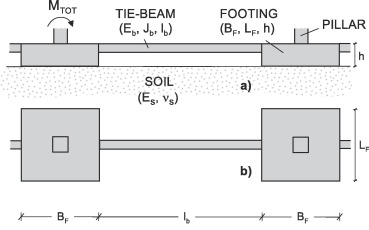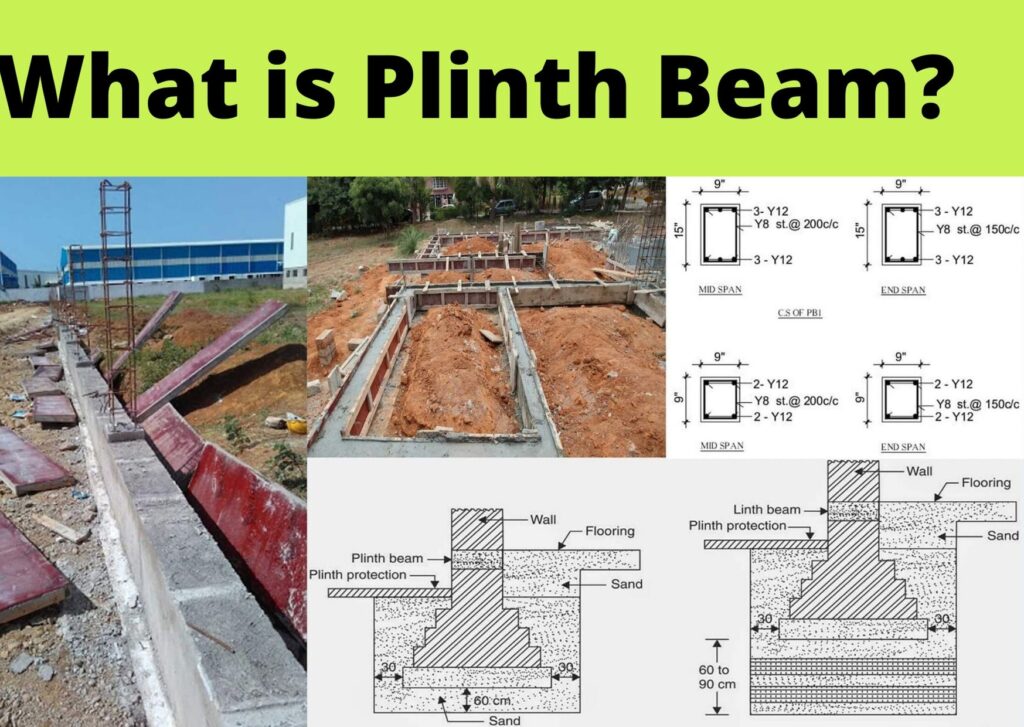Footing Tie Beam Design Details | Difference Between Plinth Beam and Tie Beam
Footing Tie Beam Design Details | Difference Between Plinth Beam and Tie Beam
What is a Tie Beam?
Tie Beams are a type of beam used in construction to connect the footings and avoid the slender column effect. When the two footings are in the same line, we use this sort of beam. It is a structure that joins two or more columns to form a frame.
It is horizontal beam that serves to prevent two other structural members from separating, esp one that connects two corresponding rafters in a roof or roof truss.
Tie beams are occasionally used in place of strap beams to absorb all stresses caused by column eccentricity on the footing. Tie beams are used as fastening components to lower the column’s unsupported length.
Footing Tie Beam Design Details
Tie beams are used in building construction to prevent column or foundation settlement. It contributes to the column’s horizontal load. Tie beams should be installed in buildings if the column height exceeds 4-5m. If the column height is less than 4m, no tie beams are required.
Tie beams can be used in structures when the height of the roof exceeds the standard height of the structure. Tie beams act as a column length breaker. These beams aid to minimize their effective length and slenderness ratio by connecting two or more columns. This sort of beam is typically found above the plinth level and in roof trusses.
Tie Beams strengthen the stiffness of a structure by connecting two columns in two directions, vertically and horizontally. Consider two columns that are linked together, column A and column B.
When column B settles, the tie beam provides resistance to its settlement by shifting force to column A. When column B is moved horizontally, column B and column A are linked by a tie beam to produce a frame action that aids in reducing horizontal deflection. Tie beams can be built at any level.
It is used in construction to support axial compression. It also shortens the effective length of the column and keeps it from buckling.
Steel reinforcing is required for the construction of these types of beams. We can estimate the amount of reinforcement required for tie beam construction.
Main bars (Top bar, Bottom bar, and Side bar) are horizontal bars that connect one footing to the other, while stirrups are vertical bars that hold the main bars in place.
Tie Beam Foundation
What is tie beam in foundation?
A tie beam foundation is a structural element in a building that connects two walls together. The function of the tie beam is to transfer the load from the wall to the foundation. A tie beam connects the columns to the foundation wall and transfer’s weight.
Is Footing Tie Beam Necessary?
Footing tie beam is a structural component of buildings. It can be used to support the foundation and prevent it from collapsing when there are lateral loads, such as wind or earthquake forces acting on the building structure.
However, many people are not aware that footing tie beams may not be necessary for some types of foundations. For example, they may not be needed with pile foundations under shallow water tables or solid rock foundations where the soil pressure is low.
Why do we use Tie Beams?
The axial compression is carried by the Tie Beam. Tie beams also shorten the Column’s effective length. and keep the column from collapsing. Tie Beams also help to lower the slenderness ratio.
What is the Difference Between Plinth Beam and Tie Beam?
The difference between plinth beams and tie beams is that one, the plinth beam, is on the bottom portion of your house, and the other, the tie beam, is on top of your house.
Plinth beams are the beams that connect to the foundation and they make up the foundation. Tie beams are often used with trusses which helps them to support the roof, and it also helps with the stability of the house.
A tie beam is an element that ties the posts together. This usually means that there is only one beam in a two-post beam house. The tie beam transfers the load from one post to the next. A plinth beam is a type of beam that is located at the bottom of a column.
The most significant difference between a tie beam and a plinth beam is that the tie beam is used to span distances between two independent structural supports which can be columns, posts, walls or beams. The plinth beam on the other hand, is used as a structural support for the foundation of a building, and is an integral part of the building’s structure.
Why do we use Plinth Beams?
When the foundation settles, a plinth beam helps prevent the expansion or propagation of cracks from the foundation into the wall above. Plinth beams uniformly distribute the load of the wall over the foundation.
What is the Difference Between Tie Beam and Grade Beam?
Tie beams are used to link columns together. Unlike tie beams, grade beams support walls and other loads. As a result, grade beams are bigger than tie beams.
What are Grade Beams
A grade beam, also known as a grade beam footing, is a foundation component of a building. It is made out of a reinforced concrete beam that transfers load from a bearing wall to spaced foundations such as pile caps or caissons.
It is employed when the load-bearing capacity of the surface soil is less than the anticipated design loads.
A grade beam is distinct from a wall footing in that a grade beam is built for bending and often spans between pile tops or caissons, whereas a wall footing bears on soil and transmits the wall’s weight straight into the ground.
A grade beam also differs from a strap beam in that it is strengthened to disperse the weight of a wall to different foundations, whereas a strap beam is meant to redistribute the weight of a column between footings.
In the case of considerable moments from lateral loads, grade beams can also be utilized in conjunction with spread footings to reduce the size of each spread footing.



